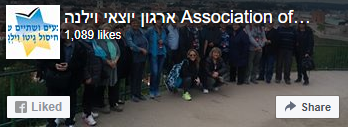Itzhak Dugin (Dogim)
From June 1941 until July 1944 over 75,000 people were murdered in Ponary, most of whom were Jewish, the others were Soviet prisoners of war and local opponents to the Nazi regime. The victims were brought to the murder site on foot, by motor vehicles and by train; in groups of tens, hundreds and thousands. There, they were shot and buried.
By 1943, Himmler had already established a special unit, Kommando 1005 , whose task it was to burn the victims' bodies in the murder pits and to hide any traces of mass murder. In Vilna, such a unit, composed of Jewish prisoners was established as well. At the end of September 1943 a group of 80 Jewish prisoners was sent to Ponary. At night the prisoners were kept in a pit and during the day they worked, with their legs in chains, they removed bodies from the pits, arranged them in piles and burnt them. The prisoners knew that when they had finished working, they too would be murdered. At night they dug a 35 meter long tunnel under the fence to a minefield. On the night of the 15th of April 1944, following three months of digging, they filed off their chains and forty of them fled through the tunnel. They were discovered by the guards and most of them were caught or shot. 15 of them succeeded in escaping and 11 of them reached the partisans in the Rudniki forests. In order to complete burning the bodies in Ponary, the Germans brought 70 people from Kailis, who were then murdered before the German retreat from Vilna. According to various estimations, Kommando 1005 burned over 60,000 corpses in Ponary.
From: Yad Vashem

